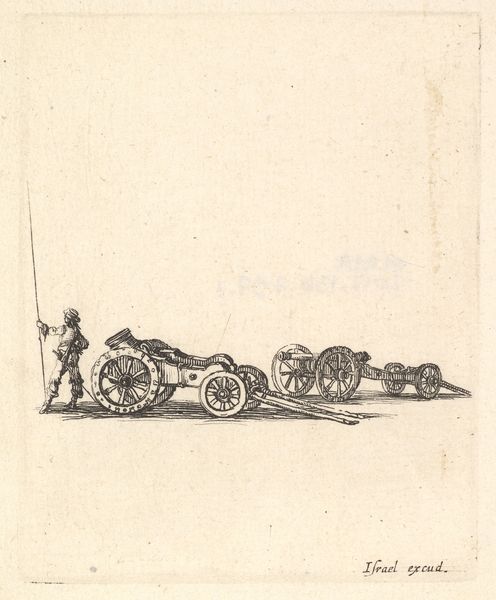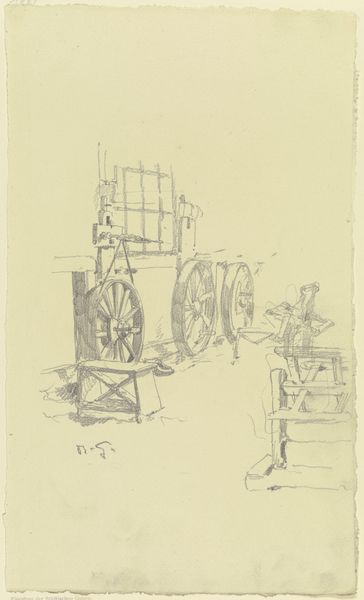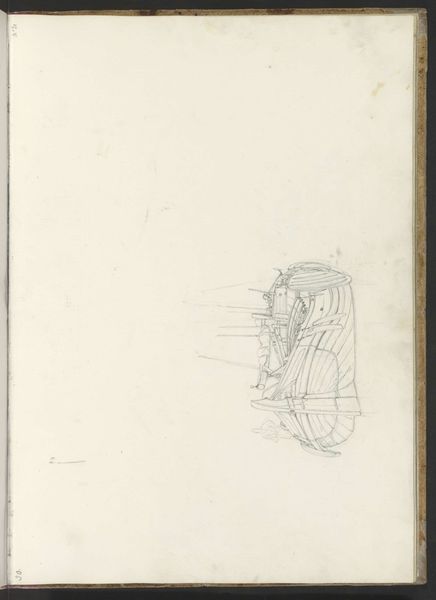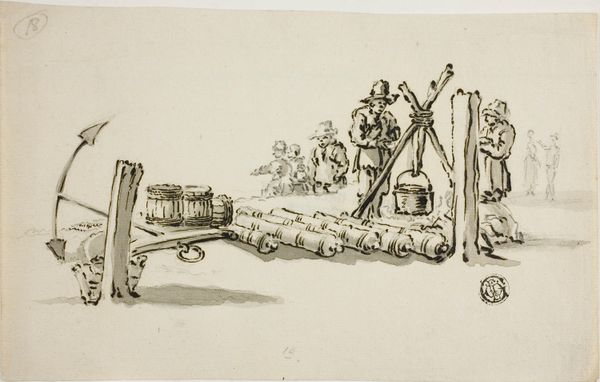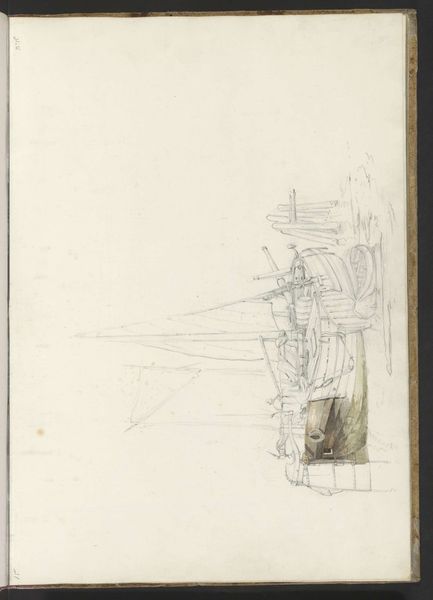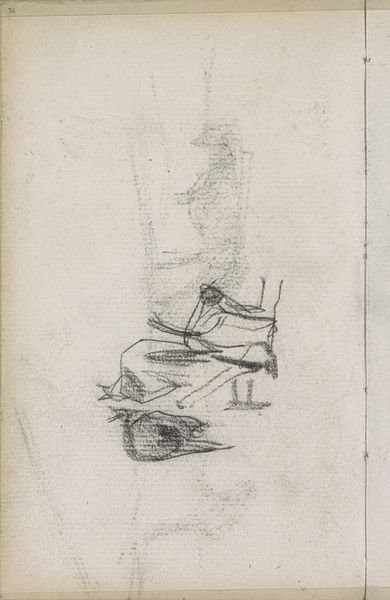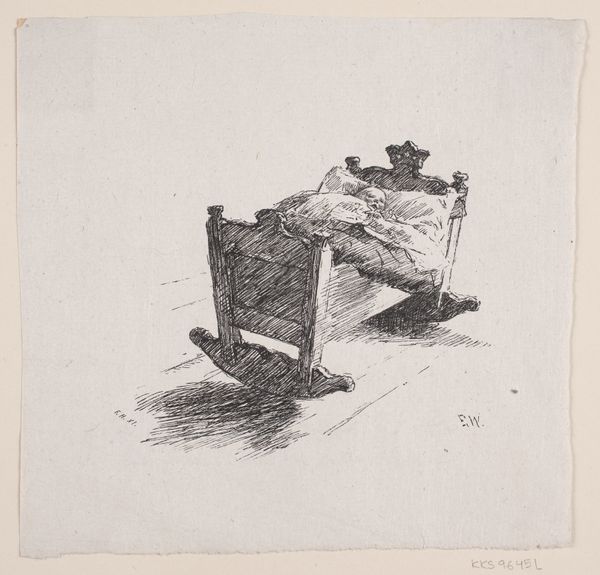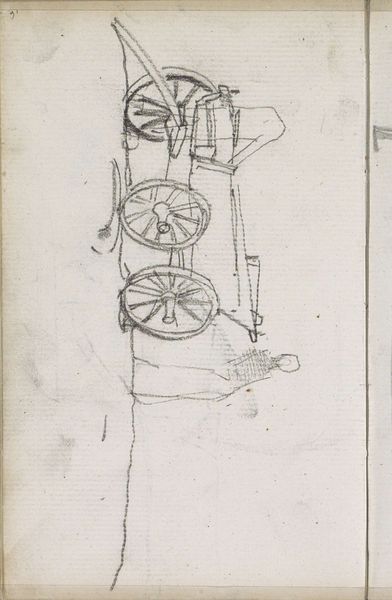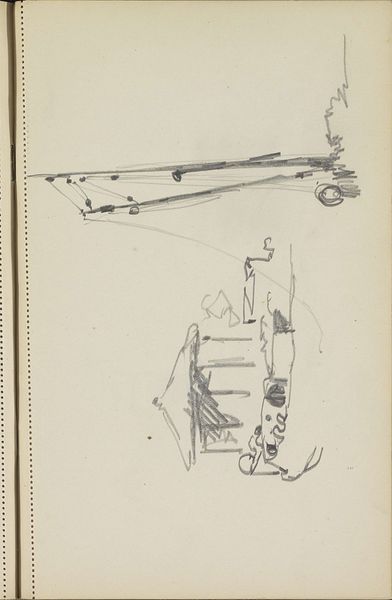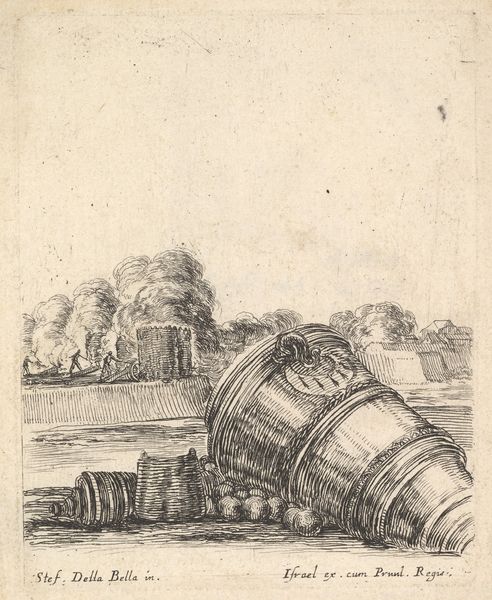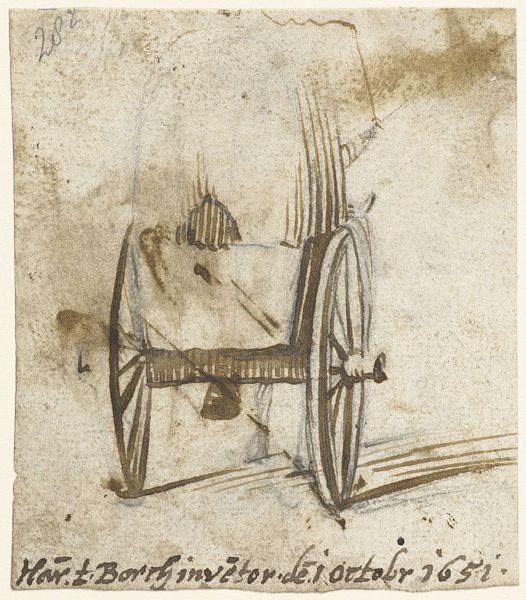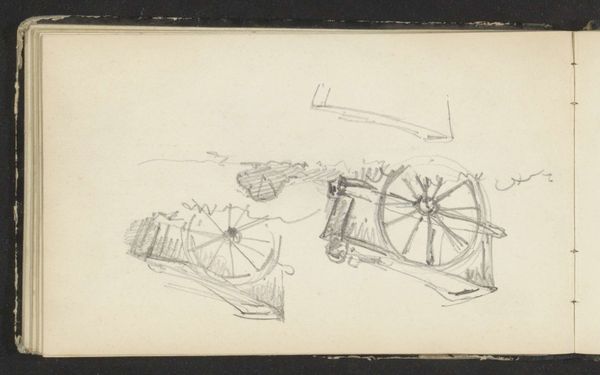
Two cannons, two soldiers seen from the back seated to the right, from 'Equipment needed for Fortification' (Recueil de diverses pièces très nécessaires à la fortification) 1638 - 1643
0:00
0:00
drawing, print, engraving
#
drawing
#
baroque
# print
#
geometric
#
line
#
history-painting
#
engraving
Dimensions: Sheet: 4 3/8 x 3 11/16 in. (11.1 x 9.3 cm) Plate: 3 3/8 x 2 11/16 in. (8.5 x 6.8 cm)
Copyright: Public Domain
Curator: Look at this image: Stefano della Bella’s print from his 'Equipment needed for Fortification', dating from around 1638-1643. It presents a scene with cannons and soldiers. It’s currently held at the Metropolitan Museum of Art. Editor: The piece is surprisingly unsettling, isn’t it? Despite the seemingly straightforward depiction of military equipment, the stark lines and almost sterile composition evoke a feeling of coldness and strategic detachment. Curator: Indeed. Let's unpack this further. This was part of a series, so we must consider it within a larger political and military landscape. Remember the Thirty Years' War was raging at the time. Such prints served both as records of technological advancements in warfare and as tools of propaganda and potentially resistance too. Editor: It raises interesting questions about visibility, particularly concerning identity and labor during war. The focus is heavily on the cannons, making the soldiers feel secondary to the mechanisms of warfare itself. We barely see their faces, which diminishes their individual identities to that of war object. It prompts a discussion about the impact of military infrastructure on lived realities. Curator: Exactly! And let's think about the baroque context. While it may seem devoid of overt emotion, the print reveals the intricate details of military technology, emphasizing control, order, and a sense of calculated dominance - ideas that underpinned much of the political thought of that era. Editor: It serves as a chilling reminder that even in the realm of "objective" documentation, ideology finds a way to seep through. We are never just looking at equipment, but power dynamics, social values, and human impacts that are inherent and encoded. Curator: A fine point. Studying it in the museum today underscores the importance of critically examining these images. To consider not only their artistic value, but their active contribution to constructing a specific historical understanding. Editor: Well, this makes me think we should spend much more time evaluating these historical echoes and reverberations today. This small artwork is so telling.
Comments
No comments
Be the first to comment and join the conversation on the ultimate creative platform.

